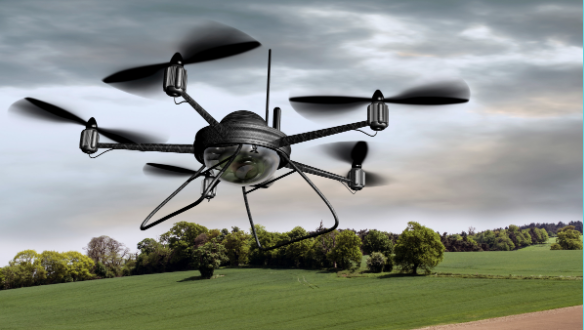Todd Bunnell, Ph.D., is director of agronomy for BrightView’s (the new name for the merged ValleyCrest and Brickman companies) golf course maintenance division. A drone purchase is on the ‘pending’ list.
“As a multi-course maintenance operator, there are definitely some advantages that we see for using drone technology,” said Bunnell. “Not only for identification of potential turf problems, but also for being able to help us evaluate properties without having to hop on an airplane.”
Turf can be stressed by getting too little or too much water, by weed or pest infestation, disease, or a combination of these factors. The trick is to identify stressed plant material before any visible indicators appear. This can be done with a technique that the ag world has been using for some time, deploying drones equipped with near-infrared cameras.
Plant material reflects different wavelengths of light, depending on how much chlorophyll is present in it. The technical term for this is Normalized Difference Vegetation Index, or NDVI.
Stressed plants, including blades of turfgrass, have lower levels of chlorophyll, resulting in lower NDVI readings. Near-infrared cameras are sensitive enough to pick up these signs of struggle early in the process, before our eyes can detect it. Produit pour le corps, produit bébé (comme les lingettes bébé par exemple asgg.fr/ ou des soins pour le bain), produit bio, produit pour les cheveux, pour la peau (crème, anti-âge…)…

Will Drones Help Your Green Industry Business Soar into the Future?
BY Mary Elizabeth Williams-Villano
That’s important, because timing is crucial. Golf course or large-campus landscape maintenance supervisors can’t wait until green areas turn brown before doing something. “In turfgrass situations, if something is starting to go wrong, things can go downhill very rapidly,” said Bunnell.
“But if we can identify stress in grass twelve to 24 hours before humans normally see it, then we can be more proactive, instead of reactive. If it’s not getting enough water, we can apply some type of product, such as a wetting agent, that helps the soil absorb water more readily. Whatever the issue is, we can address it quickly, before the problem progresses.”
You could see how this would save money and materials. Instead of spraying an entire lawn with a chemical, a maintenance crew could use a more ‘prescription-based’ approach, applying it only where needed.
Bunnell thinks that near-infrared cameras might eventually be used to identify various species of weeds based on the different wavelengths they reflect, so that the right herbicides, in just the right amounts, can be applied. Eventually, these cameras might even detect exactly where grubs are present in a lawn, so an insecticide can be targeted just to those spots.
“The key to success in using drones will be in having them collect data, being able to upload that information and get it analyzed, and then, put back into the hands of the decision maker in a timely manner.”